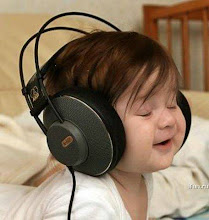The Freewheelin' Bob Dylan
Please allow me one more indulgence in my relating influential artists and albums to you. There was one last album that slapped me upside the noggin, aesthetically-speaking while I was working at the music store: Bob Dylan’s The Freewheelin’ Bob Dylan. At that point, I had heard the older, world-weary, gruff-voiced, bluesy Dylan singing in the dark on Time Out of Mind. The Freewheelin’ Bob Dylan was only his second album, released in 1963, when he was a much younger man. I had heard of Dylan, kind of vaguely in my dad’s conversation here and there growing up and had kind of dismissed him as “parents’ music,” (kind of like I did before listening to The Beatles’ White Album the first time.) I have since come to the conclusion that we ignore the music of the past at our own aesthetic peril.Can I explain to you the simple beauty of Freewheelin’? I doubt it, but I’ll try. Coming at this album 40 years after its creation is quite a trip. You see, we live in a musical world of bells and whistles. There is no sound imaginable that can’t be created on a computer and reproduced and tweaked and futzed-with in all kinds of ways. Our musical technology these days allows us to build up great complex castles of sounds and instruments. I think around the time I first heard this album, Cher was on the radio with her robot-voice “Believe” song.
Contrast all of that with the sound of a single guy singing while playing an acoustic guitar- basically, a box of wood with metal strings stretched across it. And in 1963, there wasn’t such a thing as pitch-correction to make Dylan’s voice sound more agreeable. But man! Something about the organic-ness of the sounds on this album made me feel human again. I can hear the grime on the strings, the capo squeaking, the pick striking…It’s such a warm, inviting, REAL sound, like being in the same room.
And what’s interesting to me is to see how far Dylan came from this album to Time Out of Mind. Obviously, he plugged in at some point, which made people mad. He discovered another simplicity of form separate from the folk music of his hero, Woody Guthrie: that of the twelve-bar blues. He became less a spokesman for a generation of politically disaffected folks, and more a spokesman for himself and the Bob Dylan that hides in all of us. But that’s just the difference between only those two albums. He’s covered a lot of space in between.
It’s not very theoretically sound or “critical method”-savvy for me to say so, but the songs on this album are just hypnotic to me. Plenty of people have talked about Dylan’s social-consciousness and speaking for a generation and all of that. And while I’m interested in these things, I’m just trying to elucidate for you the magic of the sounds and songs on this album. It’s like archaeology hearing this stuff for the first time. When someone digs up the remains of a vase or something in Egypt, they learn a little bit more about life thousands of years ago, but they also have to be simultaneously reminded of where civilization has come since then.
On this particular album you’ve got the social commentary in songs like “Blowin’ in the Wind,” “Masters of War,” and “Oxford Town,” unfortunately still relevant and resonant today. You’ve got real poetic metaphor and imagery in songs like “Girl from the North Country” and “A Hard Rain’s A-Gonna Fall” and a little bit of humor in songs like “Talking World War III Blues” and “Honey Just Allow Me One More Chance,” not to mention the broken-heart cure “Don’t Think Twice, It’s Allright.” It’s actually a pretty varied album, content-wise, but there is definitely an overall vibe to this album that is just so listenable.
Now, let me tell you why I think there is some magic in these sounds: I don’t even usually like music this simple. A guy and a guitar or a girl and a guitar usually gets boring quick for me. I guess I’m just not sensitive enough or not paying enough attention or paying too much attention. Who knows?
But this album is somehow one of my favorites. It’s been with me driving up and down and around mountains in Yosemite National Park with the windows down and sunroof open to the crisp mountain air. It’s been with me driving down the coast of Northern California in the Redwood Forest in the cool morning when the fog comes rolling up the mountainside from the ocean and gets stuck amidst the trees and their long shadows. This album has kept me company like a friend who only says what I want to hear in the loneliness of Laramie, Wyoming nowhere. Obviously, it’s some of the best traveling music I’ve ever heard, but it also makes you want to sit down at a small table in a small, drafty urban apartment and read poetry to soothe your aching soul.


0 Comments:
Post a Comment
<< Home